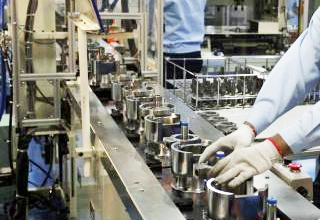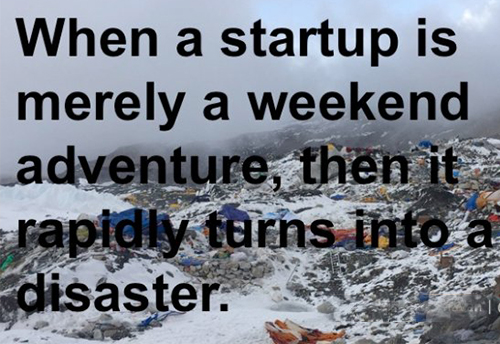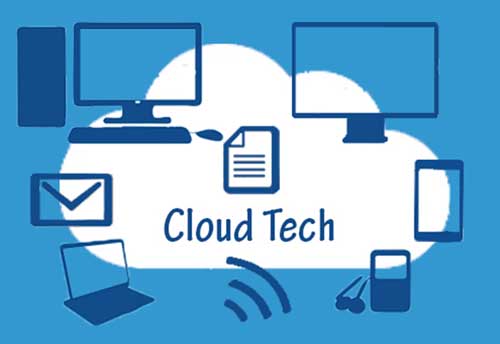Innovation and the enabling ecosystem for SMEs
Updated: Oct 27, 2016

Innovation and the enabling ecosystem for SMEs
Today we are witness to some of the most sincere efforts by Governments, right at the top to improve the ecosystem of start-up and innovation ecosystem. These have largely managed to inject a lot of positivity and optimism in the business environment.
This article is a bottom up view from an entrepreneur who earned from service revenues, invested surplus finds to create some IPRs, filed patents, carried out pilot projects, and has successfully commercialized the first one, all this within a span of three profit-making years without receiving any funding from outside friends and family. The company is a Bengaluru based SME ‘AlphaMERS Ltd’. The IPRs created are in solutions for river cleanup, offshore renewable energy and maritime security.
Few months back my friend from the developed western world called me and said – ‘I will get you some good technologies from here, why don’t you start manufacturing and selling in India’. My spontaneous reply was – ‘Give us a few months and we will give you some good technology you can use there’. While it may sound ambitious today, this is the new developing mood in the country.
Intellect is per capita and is better distributed worldwide than oil reserves. We have a population that multiplies any per capita resource very well.
Then why India does not already have a great track record in innovation. The singular most important reason in the author’s opinion is a lack of risk appetite in the Indian society. Somebody put it neatly – ‘We are very careful with our money’. Probably too careful. This hard truth is reflected in the society, in the banks and in the Government.
SMEs are the best structured functionally for innovation. The front end knows the customer needs and the back end can often design the solutions to meet these needs. There is usually a large overlap between these ends, perhaps they are even the same team. SMEs need not learn frugal innovation from business schools, they can lecture on the subject. They have known frugality it out of sheer necessity and it is now a habit. The intellectual resource often comes from the promoters themselves, for the numerous attempts leading up to any successful innovation. The opportunity cost of such high caliber promoters is not usually reflected in the books of accounts.
The concept solution is the most critical first step. Making a prototype, proving the concept and making a marketable product requires funds and resources. It requires a sound ability for sustenance.
Investment in a project without a clear commercialization and ROI roadmap, does not attract investors. Watering the plant to grow a tree, needs vision and confidence. It is easier to stand under a full grown tree that is already bearing fruits. So it is invariably left to the capability and limitations of the entrepreneur to invest his scarce resources and push the innovation cart ahead.
Commercialization is another game of roulette. It needs marketing skill and ability to sustain the morale and funds through this process. It is easier for MNCs with cash reserves, who can take a longer term view. This is not for those with small pockets or faint hearts.
A useful product generates its own demand, given a minimum threshold of publicity. At AlphaMERS, our last few enquiries for an innovation, came from PSU units and Govt sector. They had googled us for this innovation and picked up the phone to call us. This was a new experience for us, like a rainbow after a long stormy voyage. Yes there is always a lot of interest in officials to see what you got, but fewer who are ready to procure your service without meeting established procurement norms of documented experience and comparative quotes. Well noted, Govt systems lays preference to sanctity of processes over results. We wished the officials concerned had the elbow room and comfort level to take initiatives and procurement decisions.
An entrepreneur is very useful to meet the government agenda of creating jobs and boosting economic activity. The SME is the sector that creates maximum jobs for the investment made. Understandably the country needs SMEs by the millions. There is also a lot of need for innovation to achieve technology leadership, indigenization and have a good leverage within this interdependent world. There is a lot of encouragement to take up this challenging path. But there a few snags to be dealt with first.
For all the encouragement for entrepreneurship and innovation, the risk of failure is to be borne by the entrepreneur alone. There is hardly a loan without collateral or personal guarantees. Let us be clear, this approach limits me to work only up to my net worth, not to my capability. There is an obsession with securitization of any funds given to anyone including the innovator. Soft loans are offered where grants are needed. The Govt is offering to bear the cost of capital, not willing to share the risk of failure. Let me reiterate, innovation has risks but also snowballing profits when you get it right. Cost of capital is not life threatening, the risk of failure is. Now what can the SME innovators have to offer in return for someone to bear and share this the risk? Equity of course. Govt and the innovator can ride on the same boat. The innovation turns out to be a success, both make a bundle. If it doesn’t, the innovator does not lose his roof and manages to survive until his next. The personal guarantees and the extensive documentation are like a small lock on the door. Enough to deter the honest, but not enough to stop the dishonest.
This is not to say Govt must throw money at every person who walks in with a new idea. We need officials at district levels who are keen to listen to the innovation story and take a call. Officials who can think more like a visionary businessman, and less like a banker. Officials who accept that there will be few failures in innovation space.
Few steps that could go a long way in improving the financial ecosystem of innovators:
Allow valuation of IPRs to be entered into books of accounts and offered as collaterals to banks. If brand values are accepted, why not something less intangible likes IPRs.
District level officials who can listen to the local innovation stories and invest in a few by taking up equity. Enable simple and quick decision making at his level. Not someone who knows all the form numbers, but does not have a natural interest to listen to a new idea.
Enable an indigenous innovator who has demonstrable technology that delivers, to compete against established imported technology that has a track record of ‘similar works’ and comes from a high ‘net worth’ firm.
To summarize, I would encourage the Govt to make use of this vibrant SME community to improve job creation, effect import substitution and reduce its own procurements costs, and derive many such benefits. In a nutshell, shed some of the risk adverse approach and embrace a ‘risk weighted long term economical benefits’ approach. This is bound to be the best investment by the Government ever.
About the Author: DC Sekhar, Executive Director, AlphaMERS Ltd.








 Loading...
Loading...





COMMENTS
A very good article sir. Positive and approachable ways towards indegenisation and self reliant of our country by encouraging innovative entrepreneurs and eliminating hurdles. As government is putting up its best effort to encourage development of indigenous technology in every field, this article stands out timely special and spot on.